
| |
Boyle
is in Co. Roscommon which is in the province of Connacht. The town is situated at the foot of the Curlieu Mountains, on the main
Dublin/Sligo N4 route. Boyle has many historical buildings and archaeological
sites have long been of national importance.
The town of Boyle grew up around a Cistercian abbey which was established around
1169.A major battle,the Battle of the Curlieus,took place in Boyle in 1599.
Lough
Key Forest Park with
its many historical islands, located on the shores of beautiful Lough Key, just
five minutes drive from Boyle town centre.
|

|
A
landscaped caravan and camping area within the Park
provides you with a service building containing a recreation room,
toilets, showers and launderette.Your children will meet new friends at
the adjacent outdoor children's play area.
|
|
The
350 hectares of parkland, formerly Rockingham Estate, seat of the King
Harman family, invites you to walk along peaceful nature trails from which
you can enjoy the spectacular scenery and panoramic beauty that is
preserved and protected in Lough Key Forest Park. You can appreciate the
full scale of the park from the top of the Moylurg Tower, built on the
site of Rockingham Mansion, which was demolished in the 1960's following a
fire.
|
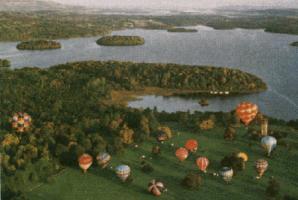
|
|
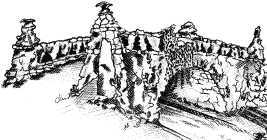
|
We
highly recommend the Nature Trail , starting from
Rockingham Harbour. It takes you past the massive tent tree, over the Fairy
Bridge (left) and along the avenue shaded by giant cedars,
leading you to the Bog Gardens. Enter by a small wooden bridge along an
unusual pathway paved with cross sections of oak trunks cut from the
forest.
|
|
The
Bog Gardens area is a particular feature of the Park,
displaying a wide selection of peat-loving plants and shrubs, and an
irregular maze of pathways leading you to many fascinating little nooks
and crannies. Masses of colourful rhododendrons (right) mingle with
the sweet scented yellow azaleas in early summer.
|

|
Crossing Drumman's
Bridge onto the island, the walk brings you through a delightful
springtime bluebell forest. With nothing to disrupt the
tranquil atmosphere of the Forest Park you may, at times, have endless walks all
to yourself.
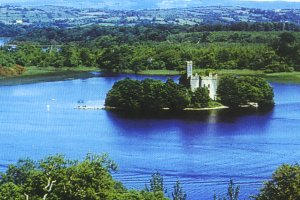 The
Harbour Coffee Shop , overlooking the lake, offers you a wide
selection of refreshments and has a superb view of Castle Island (right) which has a picturesque 19th century ruin on it. The
Harbour Coffee Shop , overlooking the lake, offers you a wide
selection of refreshments and has a superb view of Castle Island (right) which has a picturesque 19th century ruin on it.
If you are a
seasoned walker, you can press on further past Poteen Hill and maybe find the
Castle concealed in Cloontykilla Wood. Catch a fleeting glance
of fallow deer and red squirrels through the trees. Listen to the melodious
chorus of the wren and willow warbler.
Avail
of the Wind-Surfing, Water Sking and Sailing facilities at
Rockingham Harbour. The more leisurely may
hire a small boat for fishing or a visit to the 12th century Abbey ruins on
Trinity Island, where the Annals of Loch Ce were written in 1234 AD.
Swimming areas
in Lough Key Forest Park and at the Doon Shore on the North Western banks of
Lough Key tempt you to take the plunge.
 A
short distance away beside the main Dublin-Sligo road are the magnificent
restored ruins of the Cistercian abbey founded by Maurice O'Duffy in 1161 and
closely associated with the great abbey of Mellifont, County Louth. The abbey
was consecrated in 1220 and for the next 400 years withstood the sad succession
of raids, burnings and plunderings, caught as it was in the turmoil between the
MacDermots and the O'Conors, other Irish chiefs and in the wars between the Irish and
English, due to its position on an important communications route. Under James I
it passed to Sir John King and his successors. Despite its mutilations it is
still regarded as the finest of the Cistercian churches to survive in Ireland
with the majesty of the south arcade unparalleled elsewhere in the country. A
short distance away beside the main Dublin-Sligo road are the magnificent
restored ruins of the Cistercian abbey founded by Maurice O'Duffy in 1161 and
closely associated with the great abbey of Mellifont, County Louth. The abbey
was consecrated in 1220 and for the next 400 years withstood the sad succession
of raids, burnings and plunderings, caught as it was in the turmoil between the
MacDermots and the O'Conors, other Irish chiefs and in the wars between the Irish and
English, due to its position on an important communications route. Under James I
it passed to Sir John King and his successors. Despite its mutilations it is
still regarded as the finest of the Cistercian churches to survive in Ireland
with the majesty of the south arcade unparalleled elsewhere in the country.
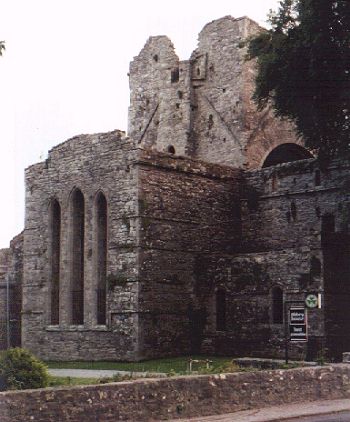
The Abbey is a transitional creation, bridging the Romanesque and Gothic
periods. This can be seen in the juxta-position of a row of rounded arches on
one side of the nave and one of pointed arches on the other.
Few
medieval Irish abbeys show better than Boyle how stonemasons built their
churches in stages. They started on the chancel (altar area) sometime before
1200A.D., and it took them until about 1220 before the west end of the nave was
completed. Curious figures and animals carved on the capitals of the columns
near the western end show scant regard for the Cistercian desire for plain
churches which would not distract people from their prayers. A small
interpretative centre is sited in the gatehouse.
|

|
The
main street in Boyle was originally the avenue to the stately home of the
King family. King House was the 18th century seat of the Kings, later
Earls of Kingston, and was built for Sir Henry King , M.P. on the site of
an earlier house which was destroyed by fire. The family moved to
Rockingham (now Lough Key Forest Park) at the end of the 18th, century and
abandoned the house, which subsequently served as a military barracks, for
the Connaught Rangers a British Army Regiment.
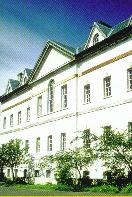 This
fine house now contains a series of exhibitions which explore the
turbulent history and the elaborate pageantry of Connacht kings and
chieftains such as the O'Conors and MacDermots, and traces the history of
Boyle and the King family. This
fine house now contains a series of exhibitions which explore the
turbulent history and the elaborate pageantry of Connacht kings and
chieftains such as the O'Conors and MacDermots, and traces the history of
Boyle and the King family.
The
King family arrived in Boyle in 1603. Through marriage and conquest the
family became one of the biggest landowning families in Ireland. The house
has recently been the subject of an complete restoration to its former
glory by Roscommon County Council. "Kings of Connacht", the
story of the house, is told through a variety of three dimensional (left) displays, with sound effects and hands-on activities ensuring children
will enjoy a visit just as much as adults.
|
|
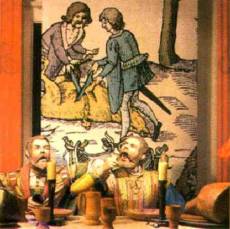
|
Individual areas focus on the
turbulent history and elaborate pageantry of the kings of Connacht, on whose
land the house was built, the arrival of the King family who built the house,
the many battles and triumphs of the Connaught Rangers for whom the house became
a military barracks and the achievements of the lengthy restoration programme.
King House is situated overlooking the Boyle River in Boyle town centre, with
the entrance on Main Street and the complex is wheelchair friendly.
Over the past
ten years BAF have purchased a number of paintings and sculptures by leading
contemporary Irish Artists. These works are at present on loan to Roscommom
County Council for exhibition in King House and can be seen April-October
10am-5pm and at other times by appointment.
Frybrook
House is
situated near the town centre by the River. The house was built c.1750 for Henry
Fry, who came to Boyle at the invitation of Lord Kingston. Frybrook House is an
imposing Georgian-style, three storey house with handsome bay windows. Many of
the rooms enjoy views of the Boyle River, which bordered part of the original 6
acre property. The drawing room contains some of the finest examples of Georgian
decorative plasterwork in existence, and an Adams fireplace. There is an oculus
in the centre of the top storey, above a Venetian window, which is above a
tripartite doorway. The house was noted for its hospitality and tradition has it
that a bell was sounded daily at 5 p.m. inviting anyone who wished to come and
dine. A tent was always kept on the grounds to accommodate those who could not
be seated in the diningroom. The present owners have beautifully restored the
house which contains many interesting architectural features.

|
